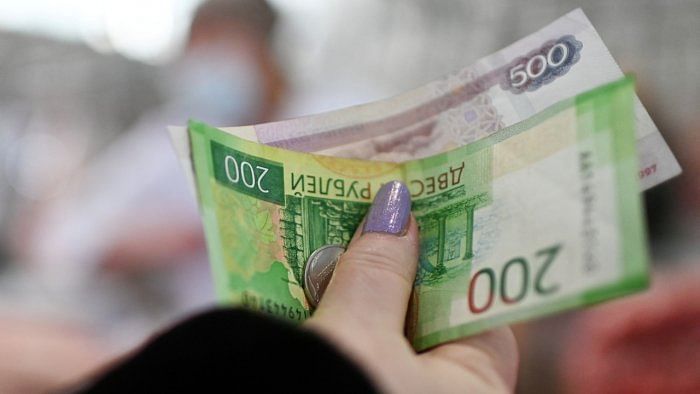
The Russian rouble slipped to a near 16-month low against the euro on Tuesday, but firmed marginally against the dollar, clawing back some ground after losing around 1 per cent in the previous session, under pressure after an attack on the Crimean Bridge.
At 0748 GMT, the rouble was 0.3 per cent stronger against the dollar at 90.74, but had lost 0.1 per cent to trade at 102.22 versus the euro, earlier touching 102.6075, its weakest point since March 28, 2022.
It had firmed 0.3 per cent against the yuan to 12.64.
The Russian currency has been gradually weakening all year as exports fall and imports recover, but pressure intensified sharply after an abortive armed mutiny by the Wagner mercenary group in late June.
Geopolitical pressure reared its head again on Monday as a blast knocked out Russia's bridge to Crimea in what Moscow called a strike by Ukrainian sea drones, killing two people. Russia annexed Crimea from Ukraine in 2014.
Easing domestic demand for foreign currency, upcoming month-end tax payments by exporters and the expected prospect of a central bank rate hike this week should all lend the rouble some support.
Analysts polled by Reuters expect the Bank of Russia to raise rates by 50 basis points to 8 per cent on Friday, with the rouble's sharp slide in recent weeks adding to already intensifying inflation pressure from labour shortages and strong consumer demand.
"I think a 0.5 per cent step at the next meeting is likely," said Dmitry Kulikov from the ACRA rating agency. "Larger steps will probably be considered."
Brent crude oil, a global benchmark for Russia's main export, was up 0.1 per cent at $78.55 a barrel.
Russian stock indexes were higher.
The dollar-denominated RTS index was up 0.9 per cent to 1,018.9 points. The rouble-based MOEX Russian index was at its strongest since before Russia invaded Ukraine in February 2022, climbing 0.5 per cent to 2,933.3 points.
Some large companies announcing the resumption of dividend payments in June and July have buttressed the index, but it remains well below the record highs above 4,000 points hit in late 2021, stung by geopolitics.